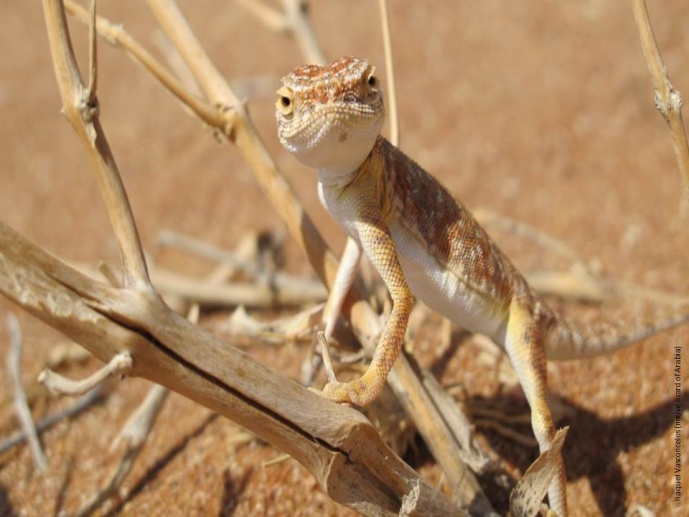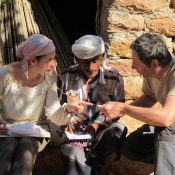Arabian reptiles as a model to investigate how biodiversity is generated and maintained in arid areas
The Arabian Peninsula comprises an area of approximately 3.2 million km2 where arid conditions prevail and deserts have a dominant presence. Its geological and climatic history is rich and complex and includes major tectonic events, the formation of mountain and deserts. All these geological and climatic factors have conditioned the evolution of its biota. Although arid environments are often perceived as monotonous, the Arabian Peninsula hosts a great diversity of organism adapted to its challenging conditions, being reptiles one of the commonest kinds of inhabitants. As a result of their ectothermy, reptiles are greatly affected by the thermal landscapes of their habitat. Moreover, they are relatively easy to catch and sample for phylogenetic studies, they are widely represented in Museum collections worldwide and, for many groups, there is abundant and detailed information on their taxonomy, ecology and distribution ranges. As a result of that, they constitute excellent vertebrate models for evolutionary, biogeographical and ecological studies and have been used as such for many decades.
In the present proposal, we plan to use the rich and unique reptile fauna of the Arabian Peninsula as a model to try to address one of the most relevant and at the same time most challenging questions in Evolutionary Biology: how biodiversity is generated and maintained. In order to do that, we will use a selection of 31 Arabian reptile genera for which we will sequence several mitochondrial and nuclear genes and revise their morphology to produce a definitive taxonomic hypotheses employing the latest molecular species delimitation methods and our extensive taxonomic expertise. This information will be used to infer a multilocus, calibrated and taxonomically updated molecular phylogeny of all 31 genera and including their closest relatives and other selected taxa used for calibration and interpretation purposes. The phylogeny, together with morphological and distribution data, will be used to:
1.- unravel the role of the major tectonic events, mountains and deserts in the origin and maintenance of Arabian reptile diversity, including the role of both deserts and mountains as sinks or sources of diversity and to investigate the level of in situ diversification in these two distinctive ecosystems;
2.- to infer the age of the main Arabian deserts; 3.- to analyze the dynamics of phenotypic and species diversification of some selected groups that have radiated extensively in Arabia, to compare the outcomes of diversification in the same environmental context and explore the adaptive component in the different groups.
This project will represent and excellent historical, systematic and comparative framework for future studies in one of the harshest terrestrial environments in the world and, at the same time, will provide a framework for the numerous scientists working in this area and a firm basis for reptile taxonomy and conservation.
PI:Salvador Carranza (IBE) , Marc Simó Riudalbas; Gustavo Llorente; Juan Manuel Pleguezuelos; Jiri Smid; Joan Garcia-Porta



